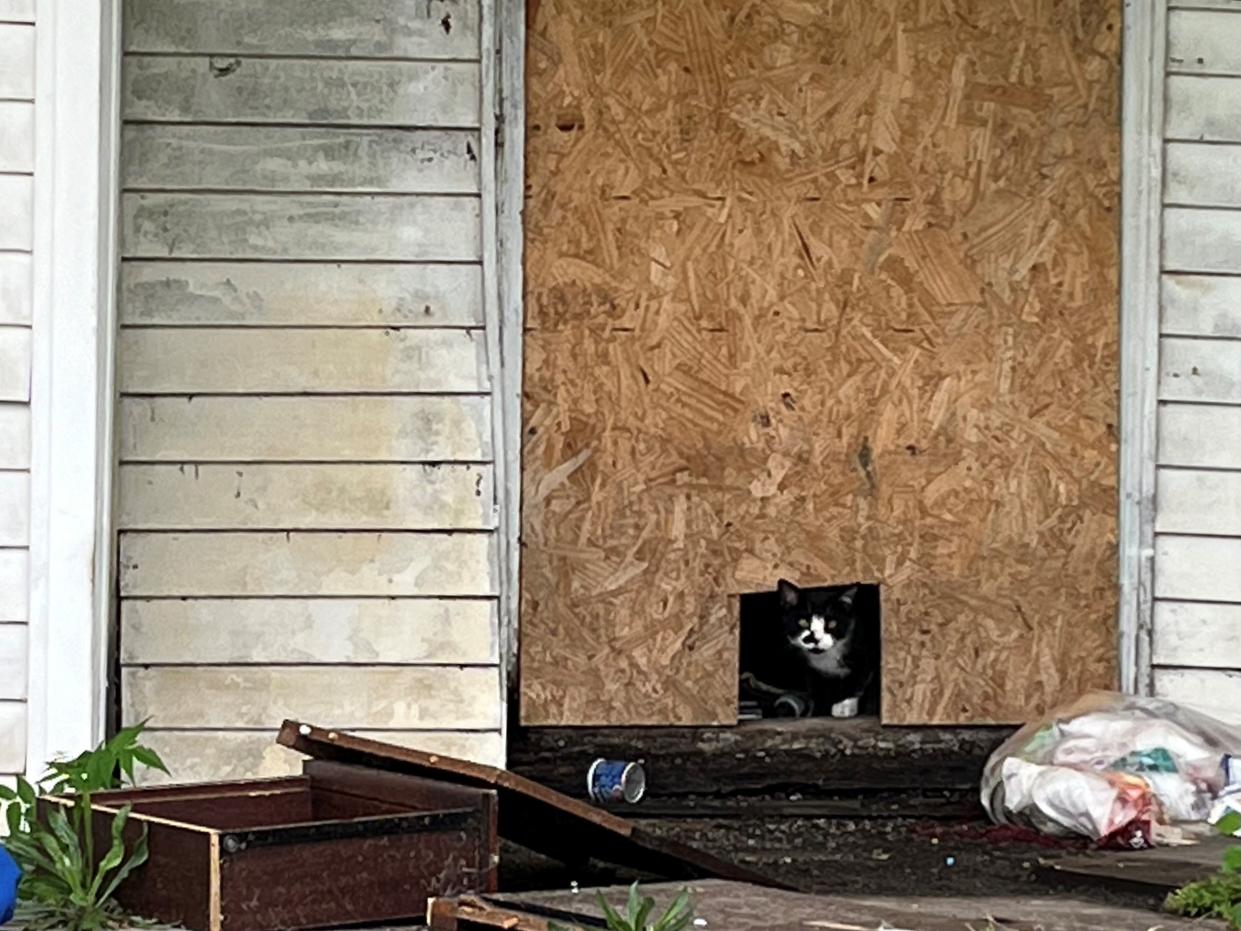Gerth: ‘It’s affordable housing for cats’: Why this neighborhood is overrun by felines

The duplex at 1745 W. Hill Street is a mess.
Nobody has lived there for years, and on a recent day there was garbage strewn around the front porch and on the side of the house. More trash had been dumped in the back yard, including an old mattress and box spring.
But that’s not even the worst of the problems.
It’s the cats.
Ron Hargrove, who owns the building two doors down where he has his photography studio, said he really doesn’t have any idea how many cats there are.
“There are orange cats, gray cats, black cats and black and white cats,” he said.
They’re always popping up on his security camera and pooping and peeing in his bushes.
They have overrun the neighborhood, he said.
More: From free concerts to Bats games & more, 23 things to do Memorial Day weekend in Louisville
Hargrove and Bruce Sherrod, of the Park Hill Neighborhood Association, said city government is aware of the problem.
In fact, it’s partially responsible for it.
The city had been trying for years to get a now defunct company that owns the house to take care of it and has failed. Now, the city is trying to foreclose.
It occasionally cleans up trash left there and cuts the grass, but it’s still an eyesore.
And cleaning up and cutting grass hasn’t helped with the cat situation. It’s not designed to.
The problem is, when Louisville’s department of Codes and Regulations boarded it up a while back, it left holes in the front and back door so the cats could come and go, essentially turning it over to the cats that have massed there over time.
“It’s affordable housing … for cats,” Sherrod said.
“A cat condo,” said Hargrove.
It’s not completely the city’s fault, however.
Sherrod and Hargrove said a woman drives in from the suburbs every few days and leaves trays of food laying around, giving cats and other varmints something to feast on and drawing more and more animals to the property.
Neighbors also feed the cats.
“I’m not an animal activist and I don’t hate cats,” said Hargrove. “But something needs to be done about this.” He picks up the aluminum trays when he sees them and throws them away.
They’re cats — natural hunters. Hargrove figures they’ll find food somewhere if the cat kibble disappears.
But the cats remain, in part because the food keeps showing up.
Hargrove and Sherrod have both complained, repeatedly calling the city’s Metro311 complaint line and have gotten little help.
They said city workers left the holes in the boards because they didn’t want to trap any cats inside.
It seems like it’s less work than capturing the cats and removing them from the home.
Hargrove said he boarded up the hole in the back door but couldn’t bring himself to board up the front door because he didn’t want to trap any cats — although he points out that second floor windows are open allowing climbers to come and go.
Sherrod, a community advocate on the city’s Affordable Housing Trust Fund board of directors, believes the city should do more to salvage houses like the one at 1745 W. Hill and turn them into housing for people who are homeless and can’t find places they can afford.
It’s not like there aren’t plenty of them.
According to a Louisville Metro database, there were 1,158 abandoned homes and properties in Louisville’s urban area in October, when numbers were last updated.
The home, which is valued at $33,310 according to the Jefferson County PVA website, was owned by a company called Caravan Oasis Inc., which has been dissolved.
Emily Martin, a spokeswoman for the department of codes and regulations, said the city is doing what it can to deal with the house.
“We have been maintaining the property for approximately three years,” she wrote in an email. And just last month, the city filed to take possession of the property.
More: Welcome to the Bishop’s Table, where 'enemies meet' to make Louisville better
Meanwhile, after I inquired about the property, she said the department notified the city’s department of Animal Services about the cat infestation and told its crews not to leave passages for cats when they board up abandoned homes.
“It is not standard protocol for us to cut any opening when we board up a property; this issue is being addressed internally to ensure staff does not do this in the future,” she said. “We will continue to work with Animal Services to ensure properties be cleared of any animals prior to our crew boarding a property.”
Hargrove said he’s seen city employees at the house since I talked to city officials, but the cats are still there and the cat door remains. But he’s hopeful they’ll get the place cleaned up and the cats removed.
Meanwhile, he said he recently spread some sort of deodorizer underneath his bushes where the cats pee and poop.
More from Joe Gerth: Since we've got the attention of white golfers, can we talk about the police?
This article originally appeared on Louisville Courier Journal: Louisville neighborhood is overrun by cats. City is partly to blame
